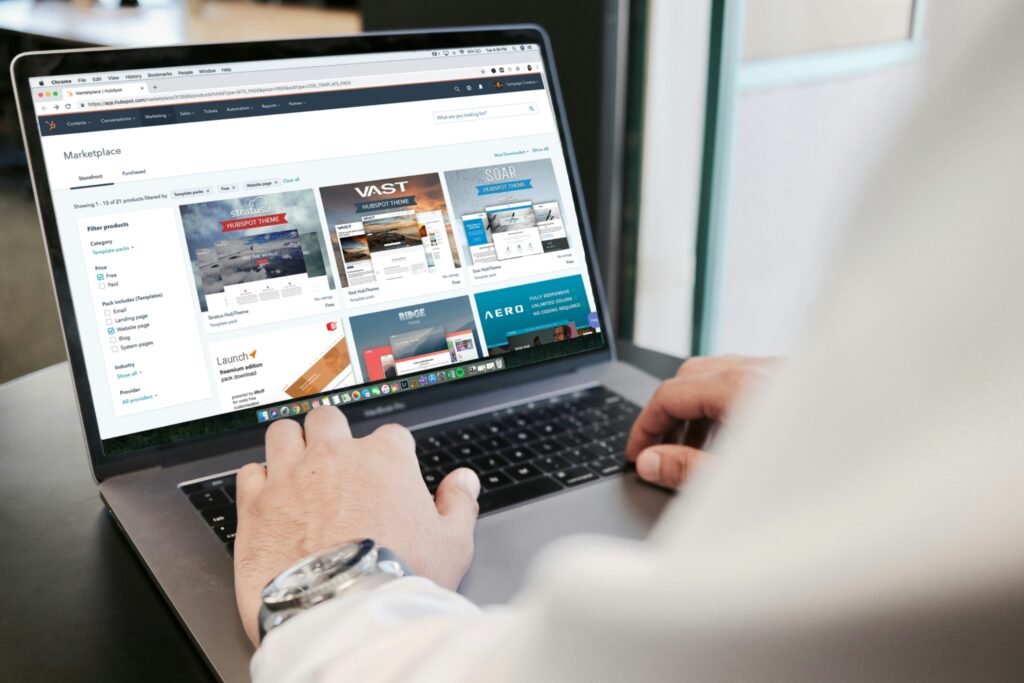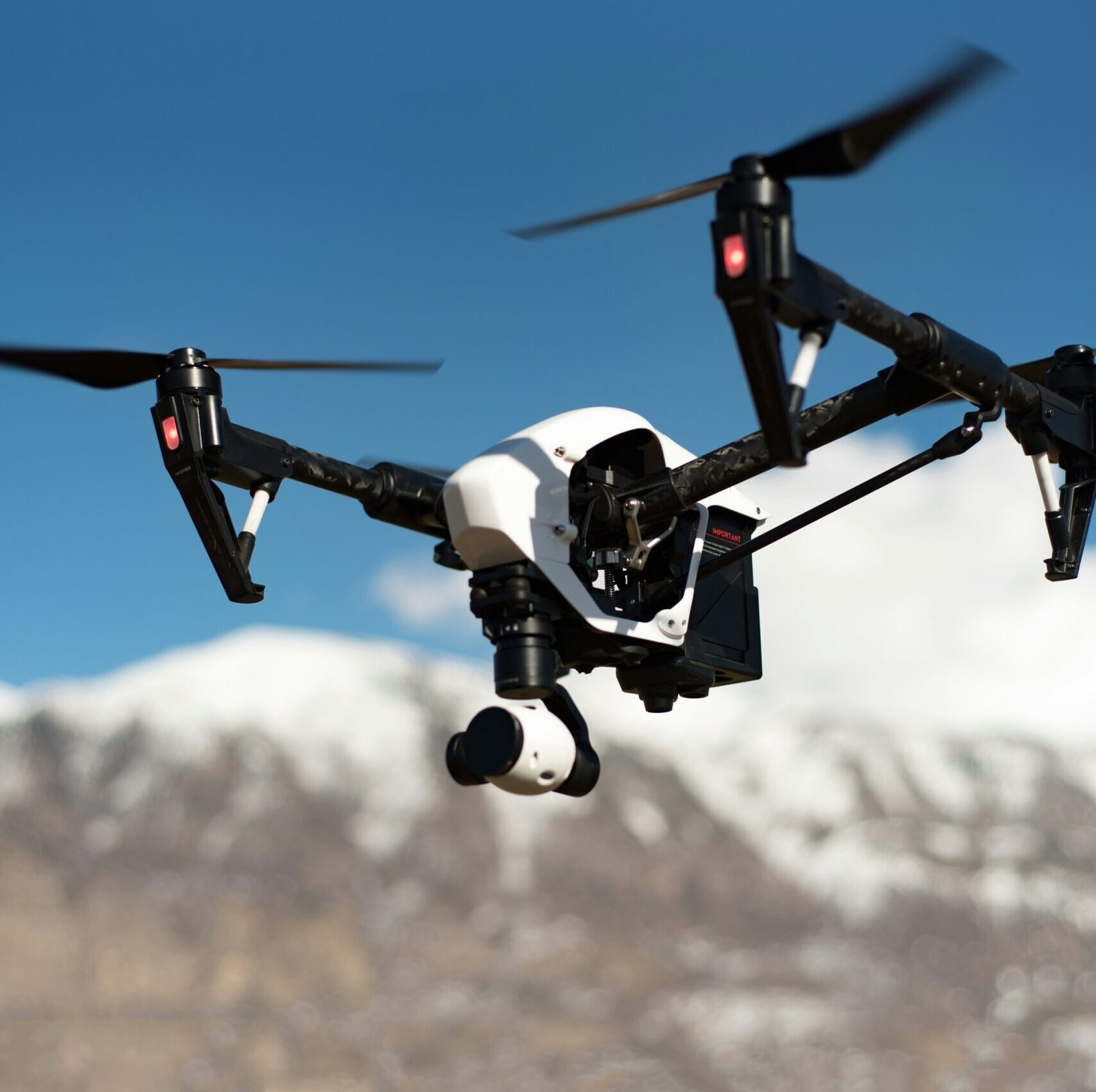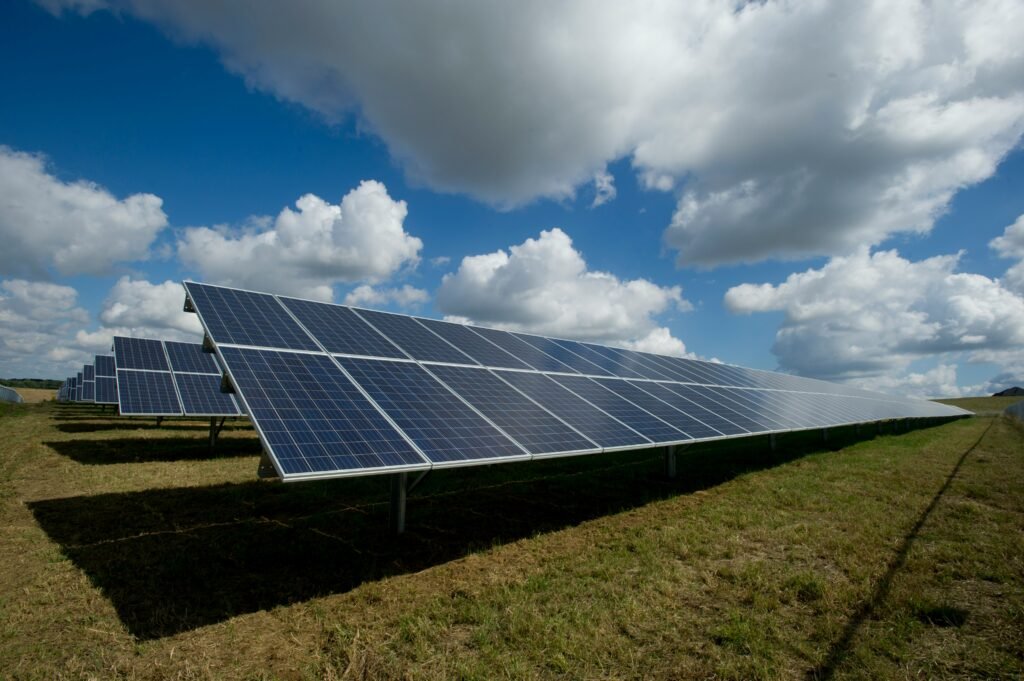
Introduction to Smart Laptops in 2025
As technology continues to evolve rapidly, the concept of smart laptops has emerged as a focal point in the electronic device market. By 2025, these innovations represent a significant shift from traditional laptops, reshaping how we interact with technology on a daily basis. Smart laptops are distinguished by their advanced features, user-friendly interfaces, and enhanced connectivity, catering to the necessities of modern life.
The evolution of laptops into smart devices illustrates a broader trend toward integrating artificial intelligence and machine learning into personal computing. Unlike traditional laptops that primarily perform basic tasks such as browsing the web or running office applications, smart laptops are equipped with capabilities that enable them to learn user preferences, predict commands, and optimize performance accordingly. These devices leverage cloud technology and seamless connectivity, providing users with a personalized computing experience across varied environments, whether in professional spaces or personal settings.
Moreover, the transition to smart laptops is driven by an increasing demand for efficiency, versatility, and accessibility. With more individuals working remotely or in hybrid environments, these laptops are designed to cope with the diverse needs of users, offering features like advanced security protocols, superior battery life, and enhanced user interfaces. The integration of integrated communication tools, such as video conferencing capabilities and real-time collaboration software, underscores the importance of smart technology in facilitating seamless interactions.
The growing need for smart technology reflects a shift in how society views digital devices. Today, laptops are not merely tools for completing tasks but are integral components of lifestyle management and productivity. As we delve deeper into the realm of smart laptops, it becomes evident that these advancements play a crucial role in shaping the future of personal computing, enhancing both functionality and user experience in unprecedented ways.
Key Features of the Best Smart Laptops
The best smart laptops of 2025 are characterized by an amalgamation of advanced features that enhance usability and overall performance. First and foremost, performance remains a paramount factor. The latest smart laptops are equipped with high-speed processors, such as Intel’s 14th generation or AMD’s Ryzen 7000 series, which facilitate seamless multitasking and robust performance for heavy applications. Additionally, they often come with enhanced graphics processing units (GPUs) that enable gaming and high-resolution media editing, ensuring that users can engage in demanding tasks without compromise.
Another vital aspect is connectivity. In an increasingly connected world, these laptops utilize the latest Wi-Fi 7 technology, which guarantees faster internet speeds and enhanced connectivity, even in crowded environments. Furthermore, the inclusion of multiple Thunderbolt ports allows for quick data transfers and versatile peripheral connections, enriching the user experience. This ensures that users have the flexibility to connect to various devices effortlessly, fostering a more productive workflow.
Battery life is also a critical element defining smart laptops. Leading models offer prolonged runtime, often exceeding 15 hours on a single charge, which is essential for users on the go. Many manufacturers are integrating advanced battery technologies and power-efficient components to achieve these extended usage times, allowing for uninterrupted productivity. Users will find that these enhancements significantly reduce the hassle of frequent charging, contributing to a more efficient work routine.
Finally, display quality cannot be overlooked. The best smart laptops of 2025 boast high-resolution screens, typically 4K or OLED, that ensure vibrant colors and sharp details. Such displays not only improve the aesthetic aspect of the laptop but also enhance visual comfort during prolonged use. A combination of vibrant displays and excellent performance features makes these laptops an excellent choice for students, professionals, and creatives alike.
Significant Technological Advancements
In recent years, the landscape of smart laptops has experienced tremendous evolution, driven by significant technological advancements in both hardware and software. One of the most prominent innovations is the integration of artificial intelligence (AI) into laptop systems. This incorporation allows for smarter functionalities, such as predictive performance optimization, which adjusts system resources according to user patterns. As a result, users can enjoy a more seamless experience, as their devices learn and adapt to their working styles.
Advancements in processing power have also played a crucial role in redefining the capabilities of smart laptops. The latest processors, including multi-core and high-frequency chipsets, deliver exceptional performance, significantly enhancing computing speed and efficiency. These enhancements enable laptops to handle demanding applications, ranging from gaming to graphic design, with ease. Furthermore, developments in graphics processing units (GPUs) have allowed for superior visual output, making smart laptops increasingly appealing for creative professionals and casual users alike.
In conjunction with processing advancements, enhanced security features have become a focal point in the evolution of smart laptops. The rise of cyber threats necessitated the implementation of robust security protocols, such as biometric authentication methods, including fingerprint scanners and facial recognition systems. These innovations provide an additional layer of protection, ensuring that sensitive information remains secure while still being convenient for users. Furthermore, encryption technologies have also been refined, offering users peace of mind as they navigate the digital landscape.
Overall, these advancements in AI integration, processing power, and security features represent a powerful shift in the capabilities of smart laptops. Collectively, they improve user experience by making devices faster, more efficient, and significantly more secure, which is essential in a world that increasingly relies on technology for both personal and professional use.
Popular Brands and Their Offerings
As of 2025, the smart laptop market is largely dominated by several key brands, each offering unique features and models catering to diverse consumer needs. Leading the charge, Apple continues to refine its MacBook line, which now includes the MacBook Pro and MacBook Air models equipped with the latest M1 and M2 chips. These models are renowned for their seamless integration with macOS, robust security features, and superior battery life, with prices starting at approximately $999 for the entry-level MacBook Air.
Late entry, Microsoft remains a strong competitor with its Surface Laptop series. The Surface Laptop 5 boasts an outstanding touchscreen display, enhanced performance with Intel’s latest processors, and an ultra-slim design. With a price range beginning around $999, it appeals to users seeking portability and performance, particularly in educational settings and professional environments.
Lenovo is another significant player, particularly noted for its ThinkPad and Yoga series. The ThinkPad X1 Carbon is favored for its durability and business-oriented features, including a spill-resistant keyboard and strong security protocols. Priced from $1,400, it is an ideal choice for professionals. Conversely, Lenovo’s Yoga series caters to creative users with its flexible design and high-resolution displays, with models starting from $1,000.
HP’s Spectre x360 also deserves mention, featuring a 2-in-1 convertible design that allows for versatile usage. Recognized for aesthetics along with performance, this model comes equipped with Intel’s Evo platform for enhanced battery life and responsiveness. The starting price is around $1,299, making it a competitive option for users seeking both style and functionality.
As the smart laptop landscape continues to evolve in 2025, consumers have an array of choices, each brand offering distinct advantages tailored to various preferences and budgets. The decision fundamentally hinges on individual needs, whether prioritizing performance, design, or specific functionalities.
Comparative Analysis of Top Smart Laptops
As we delve into the comparative analysis of the best smart laptops available in 2025, it is essential to evaluate their specifications, pros and cons, and suitable use cases. This analysis will help consumers make informed decisions tailored to their unique needs.
The first model under consideration is the UltraTech Aurora 15. This laptop excels in performance, powered by an Intel i9 processor and equipped with 32GB RAM, making it ideal for demanding tasks such as video editing and gaming. Its 4K OLED display provides stunning visuals, while its lightweight design enhances portability. However, the battery life can be somewhat limited under heavy use, and its high price point may deter budget-conscious buyers.
Next, we have the EcoBook Green 14, a fantastic option for environmentally conscious consumers. This laptop features a sustainable design made from recycled materials and boasts a powerful AMD Ryzen 7 processor with 16GB of RAM. It offers a remarkable battery life of up to 15 hours, making it suitable for professionals on the go. However, the display resolution may fall short for those who prioritize visual fidelity.
Another noteworthy model is the TechFusion 2-in-1 Pro, which combines the functionalities of a laptop and a tablet. With a versatile touchscreen and detachable keyboard, it appeals to users seeking flexibility for both work and leisure. Its specifications include an Intel i7 processor and 16GB of RAM, catering to most everyday tasks efficiently. The main drawback is its somewhat bulky design, which might not suit users who prefer ultra-thin laptops.
Lastly, the PixelMaster X30 stands out for its stunning Retina display and excellent multitasking capabilities, thanks to its 64GB RAM. It accommodates professionals working with graphic-intensive applications. Still, its significant weight makes it less portable compared to its counterparts. Evaluating these models thoroughly allows potential buyers to choose the smart laptop that best aligns with their requirements.
User Experience and Testimonials
As technology evolves, user experiences play a crucial role in assessing the effectiveness of modern devices, particularly in the realm of smart laptops. In 2025, many users have shared their experiences regarding the latest smart laptops, highlighting both their advantages and challenges. A common theme among feedback is the enhanced usability that these laptops offer. For instance, many users appreciate the seamless integration of applications, which significantly boosts productivity. One user mentioned that switching between various tasks, such as video conferencing and document editing, has become effortless with the powerful multitasking capabilities of these smart devices.
In terms of design, numerous testimonials reflect users’ satisfaction with the lightweight and slim profile of smart laptops, making them ideal for professionals on the go. A marketing executive shared that the portability of her device enables her to work from different locations without the hassle of carrying bulky equipment. The impressive battery life is another frequent highlight among reviewers, with many noting that they can work for extended periods without the need to recharge—an essential feature for those frequently traveling or attending meetings.
However, challenges also arise, especially regarding software updates and compatibility issues. While many users are generally satisfied with their smart laptops, some have voiced concerns over how quickly certain applications can become outdated. For instance, one user recounted their frustration when a beloved productivity tool was not compatible with a recent software update, leading to a temporary disruption in work efficiency. This illustrates the importance of ongoing support and compatibility considerations when selecting a smart laptop.
Overall, users’ testimonials reveal that while smart laptops have significantly improved productivity and ease of use, potential buyers should remain aware of possible challenges and prioritize devices with strong customer support and regular updates. These insights reflect the current landscape of smart laptops and how real-world experiences shape our understanding of their value.
Future Trends in Smart Laptop Technology
As we look beyond 2025, the landscape of smart laptop technology is poised for remarkable advancements. One of the most anticipated trends is the deepening integration of artificial intelligence (AI) in various aspects of laptop functionality. Beyond basic features like voice recognition and personalized recommendations, future smart laptops are expected to leverage AI to optimize performance dynamically. This may include real-time resource management, enhanced security features through adaptive learning, and improved user interfaces that intuitively respond to the user’s habits.
Flexibility in design will also play a significant role in the evolution of smart laptops. The traditional clamshell form factor may give way to innovative, multi-functional devices. Concepts such as foldable screens, detachable components, and modular designs are gaining traction. These developments will not only enhance portability but will also allow for a greater degree of customization to meet varying user needs. By 2025 and beyond, smart laptops may embody a more user-centric approach, reshaping how consumers interact with technology in their daily lives.
Equally important is the rising emphasis on sustainability within laptop manufacturing. As concerns over electronic waste and the environmental impact of tech production grow, manufacturers are expected to adopt greener practices. This might involve utilizing recycled materials, reducing energy consumption, and implementing strategies for responsible end-of-life disposal. Furthermore, developments in energy sources, such as solar-powered batteries or self-charging technologies, could revolutionize how laptops are powered, extending their usability and reducing their carbon footprint.
In conclusion, the future of smart laptop technology will focus on enhanced AI integration, innovative design concepts, and sustainable manufacturing practices. These trends indicate a significant shift in how laptops function and their role within a more tech-savvy society.
Investment Considerations: Pricing and Value
As the technology landscape continues to evolve, smart laptops in 2025 present a myriad of pricing options, reflecting their advanced features and functionalities. Understanding the pricing landscape is essential for consumers who seek to make informed purchasing decisions. Pricing for smart laptops typically ranges from budget to premium segments, catering to various user needs and preferences. In the budget category, consumers can find basic models equipped with adequate performance suitable for everyday tasks such as web browsing and document editing.
In contrast, mid-range options often incorporate enhanced specifications, such as improved processing power, better graphics, and superior build quality, making them ideal for users who require additional capabilities without breaking the bank. Premium laptops, on the other hand, boast cutting-edge technology, such as powerful processors, high-resolution displays, and advanced connectivity options. These models not only provide exceptional performance but also include luxurious design elements and enhanced customer support, elevating their overall value.
When determining fair value, consumers should assess the features most relevant to their usage scenarios. Investing in a smart laptop involves not just an upfront cost, but also considerations around longevity and performance in the years to come. Consumers must evaluate how the features align with their needs, budget constraints, and potential future developments in technology. It is advisable to compare different models and brands, taking into consideration warranties, customer service, and after-sales support, which significantly contribute to the overall value of the investment.
In summary, navigating the pricing landscape for smart laptops in 2025 requires a strategic approach that balances immediate affordability with long-term value. By understanding the features offered across different price points, consumers can make well-informed decisions that suit their technological needs and financial situations.
Conclusion and Final Recommendations
Throughout this discussion, we have examined the salient features and innovations that define the best smart laptops of 2025. These devices have evolved tremendously, integrating advanced technologies such as artificial intelligence, enhanced battery life, and seamless connectivity options. With a range of models catering to a variety of user needs—from gaming to professional use—selecting the right smart laptop can seem daunting.
When choosing a smart laptop, it is crucial to evaluate your specific requirements. For professionals who prioritize performance, models equipped with high-end processors and substantial RAM will ensure smooth multitasking and efficient completion of demanding tasks. On the other hand, for students or casual users, a lightweight laptop with decent specifications and battery efficiency might serve perfectly. It is also advisable to consider factors such as display quality, portability, and budget constraints, as these elements significantly impact user experience.
Additionally, the trend toward eco-friendly technology should not be overlooked. Incorporating sustainability into your decision can lead to selecting a laptop that not only meets personal needs but also contributes positively to the environment. Many manufacturers are now focusing on producing laptops using recyclable materials and energy-efficient components. This aligns well with the growing consumer consciousness regarding the carbon footprint of their devices.
As we have established, informed decision-making is vital when navigating the myriad of options. Assessing specifications, reviews, and personal requirements will empower consumers to choose the best smart laptop that aligns with their lifestyle and technical demands. Ultimately, the best laptop for one user may not necessarily suit another, underscoring the importance of individual preferences and use cases in making an appropriate choice.

